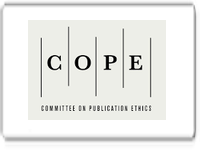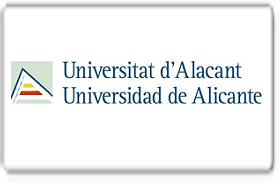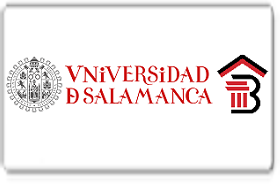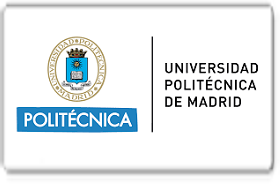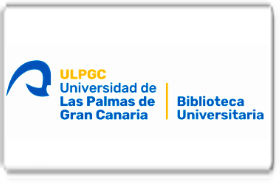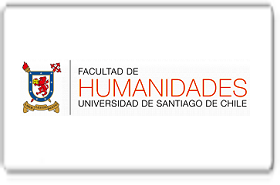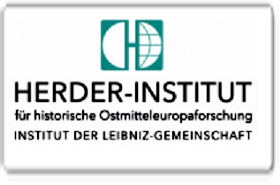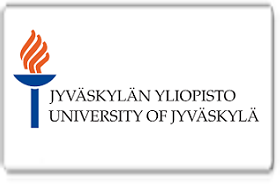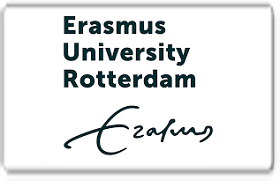Explorando nuevas tendencias en el tratamiento de la parvovirosis canina: una revisión bibliográfica
DOI:
https://doi.org/10.56048/MQR20225.8.4.2024.2706-2738Palabras clave:
efectos farmacológicos; inmunología; patogenicidad; fisiología; parvovirus caninoResumen
Introducción: La parvovirosis canina continúa siendo una enfermedad letal para los cachorros menores de 6 meses. A pesar de la existencia de vacunas efectivas, muchos cachorros no están vacunados y enfrentan un tratamiento incierto. La investigación de nuevas terapias es esencial para reducir la mortalidad y acortar el tiempo de hospitalización de los pacientes. Objetivo: Analizar nuevas opciones de tratamiento mediante una revisión exhaustiva de documentos científicos. Metodología: Se adoptó un enfoque cualitativo, enmarcado en la metodología documental y de revisión bibliográfica en bases de datos científicas reconocidas utilizando palabras clave relevantes. Resultados: Las terapias más prometedoras incluyen: Plasma hiperinmune: aumenta la tasa de supervivencia en un 100%. Trasplante de microbiota fecal: restaura la flora intestinal del cachorro, reduciendo la gravedad de los síntomas y mejorando el pronóstico. Anticuerpos monoclonales: alcanzando tasas de supervivencia del 100% en estudios experimentales. Anticuerpos IgY: que demostraron una tasa de supervivencia de 83.33%. Antivirales: como la nitazoxanida han mostrado resultados prometedores in vitro mediante la inhibición del virus. Interferón omega felino: efectiva en la inhibición del virus en estudios in vitro; en estudios clínicos ha demostrado mejorar la sintomatología y disminuir la mortalidad. Antioxidantes: Como la N-acetilcisteína y el resveratrol protegen las células del daño oxidativo, siendo útiles como terapia complementaria. Conclusiones: El plasma hiperinmune y los anticuerpos monoclonales muestran tasas de supervivencia del 100%. Fármacos como el interferón lambda (Ad-caIFNλ3) y la nitazoxanida han mostrado alta eficacia in vitro (100% y 98%). Sin embargo, la vacunación sigue siendo esencial para controlar la enfermedad.
Descargas
Métricas
Cited
DOI: 10.56048![]()
Citas
Acciacca, R. A., Sullivan, L. A., Webb, T. L., Johnson, V., & Dow, S. W. (2020). Clinical evaluation of hyperimmune plasma for treatment of dogs with naturally occurring parvoviral enteritis. Journal of Veterinary Emergency and Critical Care, 30(5), 525–533. https://doi.org/10.1111/vec.12987
Amadori, M., Kubesy, A., & Pavón, L. (2022). Altered neutrophil-to-lymphocyte ratio in sepsis secondary to canine parvoviral enteritis treated with and without an immunomodulator in puppies. Frontiers in Veterinary Science.
Bragg, R. F., Duffy, A. L., & DeCecco, F. A. (2012). Clinical evaluation of a single dose of immune plasma for treatment of canine parvovirus infection. JAVMA, 240.
Chaitman, J., & Gaschen, F. (2021). Fecal Microbiota Transplantation in Dogs. In Veterinary Clinics of North America - Small Animal Practice (Vol. 51, Issue 1, pp. 219–233). W.B. Saunders. https://doi.org/10.1016/j.cvsm.2020.09.012
Chethan, G. E., De, U. K., Singh, M. K., Chander, V., Raja, R., Paul, B. R., Choudhary, O. P., Thakur, N., Sarma, K., & Prasad, H. (2023). Antioxidant supplementation during treatment of outpatient dogs with parvovirus enteritis ameliorates oxidative stress and attenuates intestinal injury: A randomized controlled trial. Veterinary and Animal Science, 21. https://doi.org/10.1016/j.vas.2023.100300
Elanco Animal Heatlh. (2024). Treat parvo. Fight parvo. Stop parvo. Elanco. https://my.elanco.com/us/campaign/parvo
Franzo, G., Corso, B., Tucciarone, C. M., Drigo, M., Caldin, M., & Cecchinato, M. (2020). Comparison and validation of different models and variable selection methods for predicting survival after canine parvovirus infection. Veterinary Record. https://doi.org/10.1136/vetrec-2018-105283
Ge, S., Xu, L., Li, B., Zhong, F., Liu, X., & Zhang, X. (2020). Canine Parvovirus is diagnosed and neutralized by chicken IgY-scFv generated against the virus capsid protein. Veterinary Research, 51(1). https://doi.org/10.1186/s13567-020-00832-7
Ge, S., Zhang, X., Zhong, F., Liu, X., & Zhang, X. (2021). Generation and evaluation of IgY-scFv based mimetics against canine parvovirus. Veterinary Research, 52(1), 70. https://doi.org/10.1186/s13567-021-00943-9
Gaykwad, C., Garkhal, J., Chethan, G. E., Nandi, S., & De, U. K. (2018). Amelioration of oxidative stress using N-acetylcysteine in canine parvoviral enteritis. Journal of Veterinary Pharmacology and Therapeutics, 41(1), 68–75. https://doi.org/10.1111/jvp.12434
Guallasamín–Quisilema, O. V., Armas–Ariza, J. C., Moreno–López, V. M., & Espinoza–Miranda, O. E. (2023). Outpatient treatment for Canine Parvovirosis: evaluation of Hemogram test, C–reactive protein and lactate. Revista Cientifica de La Facultad de Veterinaria, 33(2). https://doi.org/10.52973/rcfcv-e33246
Horecka, K., Porter, S., Susan Amirian, E., & Jefferson, E. (2020). A decade of treatment of canine parvovirus in an animal shelter: A retrospective study. Animals, 10(6). https://doi.org/10.3390/ani10060939
Horecka, K., Ratnayaka, N., & Davis, E. A. (2020). Changes in mass treatment of the canine parvovirus icu population in relation to public policy changes during the covid-19 pandemic. Viruses, 12(12). https://doi.org/10.3390/v12121419
Hussain, K., & Rabbani, A. H. (2021). Canine Parvo Virus: A Review on Current Perspectives in Seroprevalence, Diagnostics and Therapeutics. Global Veterinary, 2, 113–126. https://doi.org/10.5829/idosi.gv.2021.113.126
Jacob, J. A. (2023). Monoclonal antibodies show promise as new therapy for veterinary patients. AVMA.
Kim, D. H., Han, S. H., Go, H. J., Kim, D. Y., Kim, J. H., Lee, J. B., Park, S. Y., Song, C. S., Lee, S. W., & Choi, I. S. (2022). Antiviral activity of canine interferon lambda 3 expressed using a recombinant adenovirus against canine coronavirus, canine parvovirus, and canine distemper virus. Veterinary Research Communications, 46(4), 1363–1368. https://doi.org/10.1007/s11259-022-10000-1
Kim, M., Lim, S.-I., Ouh, I.-O., Kim, M. J., Kwon, M., Cho, S. D., Hyun, B., & Lee, Y.-H. (2022). Production and characterization of two monoclonal antibodies against canine parvovirus 2. Journal of the Preventive Veterinary Medicine, 46(2), 55–61. https://doi.org/10.13041/jpvm.2022.46.2.55
Larson, L., Miller, L., Margiasso, M., Piontkowski, M., Tremblay, D., Dykstra, S., Miller, J., Slagter, B. J., Champ, D., Keil, D., Patel, M., & Wasmoen, T. (2024). Early administration of canine parvovirus monoclonal antibody prevented mortality after experimental challenge. Journal of the American Veterinary Medical Association, 1–7. https://doi.org/10.2460/javma.23.09.0541
Li, S. fang, Zhao, F. rong, Shao, J. jun, Xie, Y. li, Chang, H. yun, & Zhang, Y. guang. (2017). Interferon-omega: Current status in clinical applications. In International Immunopharmacology (Vol. 52, pp. 253–260). Elsevier B.V. https://doi.org/10.1016/j.intimp.2017.08.028
Liu, K., Xu, P., Li, Y., Qin, J., Zhu, J., & Li, Y. (2023). Inhibition of canine parvovirus 2 (CPV-2) replication by TAT-scFv through targeting of the viral structural protein VP2 of CPV-2. In NEW MICROBIOLOGICA (Vol. 46).
Mazzaferro, E. M. (2020). Update on Canine Parvoviral Enteritis. In Veterinary Clinics of North America - Small Animal Practice (Vol. 50, Issue 6, pp. 1307–1325). W.B. Saunders. https://doi.org/10.1016/j.cvsm.2020.07.008
Molinar, S. (2023). Actualización de la parvovirosis canina: diagnóstico y tratamiento. Vanguardia Veterinaria. http://www.ictvonline.org
Muñoz, A. I., Vallejo-Castillo, L., Fragozo, A., Vázquez-Leyva, S., Pavón, L., Pérez-Sánchez, G., Soria-Castro, R., Mellado-Sánchez, G., Cobos-Marin, L., & Pérez-Tapia, S. M. (2021). Increased survival in puppies affected by Canine Parvovirus type II using an immunomodulator as a therapeutic aid. Scientific Reports, 11(1). https://doi.org/10.1038/s41598-021-99357-y
Naveenkumar, V., & Nagarajan, B. (2019). Heterogenous ImmunoglobulinY (IgY) Therapy: A New Modality in Canine Parvovirus Enteritis Treatment. The Indian Journal of Science. https://www.researchgate.net/publication/334194686
Naveenkumar, V., Vijaya, M., Kannan, P., & Nag, P. (2023). Evaluation of Immunoglobulin Y (IgY) in Canine Parvoviral Enteritis Infected Dogs. The Indian Journal of Veterinary Sciences and Biotechnology, 19(1). https://doi.org/10.48165/ijvsbt.19.1.04
Otsubo, R., & Yasui, T. (2022). Monoclonal antibody therapeutics for infectious diseases: Beyond normal human immunoglobulin. In Pharmacology and Therapeutics (Vol. 240). Elsevier Inc. https://doi.org/10.1016/j.pharmthera.2022.108233
Pereira, G. Q., Gomes, L. A., Santos, I. S., Alfieri, A. F., Weese, J. S., & Costa, M. C. (2018). Fecal microbiota transplantation in puppies with canine parvovirus infection. Journal of Veterinary Internal Medicine, 32(2), 707–711. https://doi.org/10.1111/jvim.15072
Salavati Schmitz, S. (2022). Observational Study of Small Animal Practitioners’ Awareness, Clinical Practice and Experience With Fecal Microbiota Transplantation in Dogs. Topics in Companion Animal Medicine, 47. https://doi.org/10.1016/j.tcam.2022.100630
Su, X., Zhou, H., Han, Z., Xu, F., Xiao, B., Zhang, J., Qi, Q., Lin, L., Zhang, H., Li, S., & Yang, B. (2024). Transcriptional Differential Analysis of Nitazoxanide-Mediated Anticanine Parvovirus Effect in F81 Cells. Viruses, 16(2). https://doi.org/10.3390/v16020282
Tieu, S., Charchoglyan, A., Paulsen, L., Wagter-Lesperance, L. C., Shandilya, U. K., Bridle, B. W., Mallard, B. A., & Karrow, N. A. (2023). N-Acetylcysteine and Its Immunomodulatory Properties in Humans and Domesticated Animals. In Antioxidants (Vol. 12, Issue 10). Multidisciplinary Digital Publishing Institute (MDPI). https://doi.org/10.3390/antiox12101867
Tuteja, D., Banu, K., & Mondal, B. (2022). Canine parvovirology – A brief updated review on structural biology, occurrence, pathogenesis, clinical diagnosis, treatment and prevention. Comparative Immunology, Microbiology and Infectious Diseases, 82.
Ulas, N., Ozkanlar, Y., Ozkanlar, S., Timurkan, M. O., & Aydin, H. (2024). Clinical and inflammatory response to antiviral treatments in dogs with parvoviral enteritis. Journal of Veterinary Science, 25(1). https://doi.org/10.4142/jvs.23139
Virbac. (2021). Virbagen omega. Veterinary Record. https://vet-es.virbac.com/home/productos/perros/antivirales/virbagen-omega.html
Wang, X., Zhang, J., Huo, S., Zhang, Y., Wu, F., Cui, D., Yu, H., & Zhong, F. (2020). Development of a monoclonal antibody against canine parvovirus NS1 protein and investigation of NS1 dynamics and localization in CPV-infected cells. Protein Expression and Purification, 174. https://doi.org/10.1016/j.pep.2020.105682
Zhou, H., Su, X., Lin, L., Zhang, J., Qi, Q., Guo, F., Xu, F., & Yang, B. (2019). Inhibitory effects of antiviral drug candidates on canine parvovirus in f81 cells. Viruses, 11(8). https://doi.org/10.3390/v11080742
Publicado
Cómo citar
Número
Sección
Categorías
Licencia

Esta obra está bajo una licencia internacional Creative Commons Atribución 4.0.
Los autores se comprometen a respetar la información académica de otros autores, y a ceder los derechos de autor a la Revista MQRInvestigar, para que el artículo pueda ser editado, publicado y distribuido. El contenido de los artículos científicos y de las publicaciones que aparecen en la revista es responsabilidad exclusiva de sus autores. La distribución de los artículos publicados se realiza bajo una licencia 


















